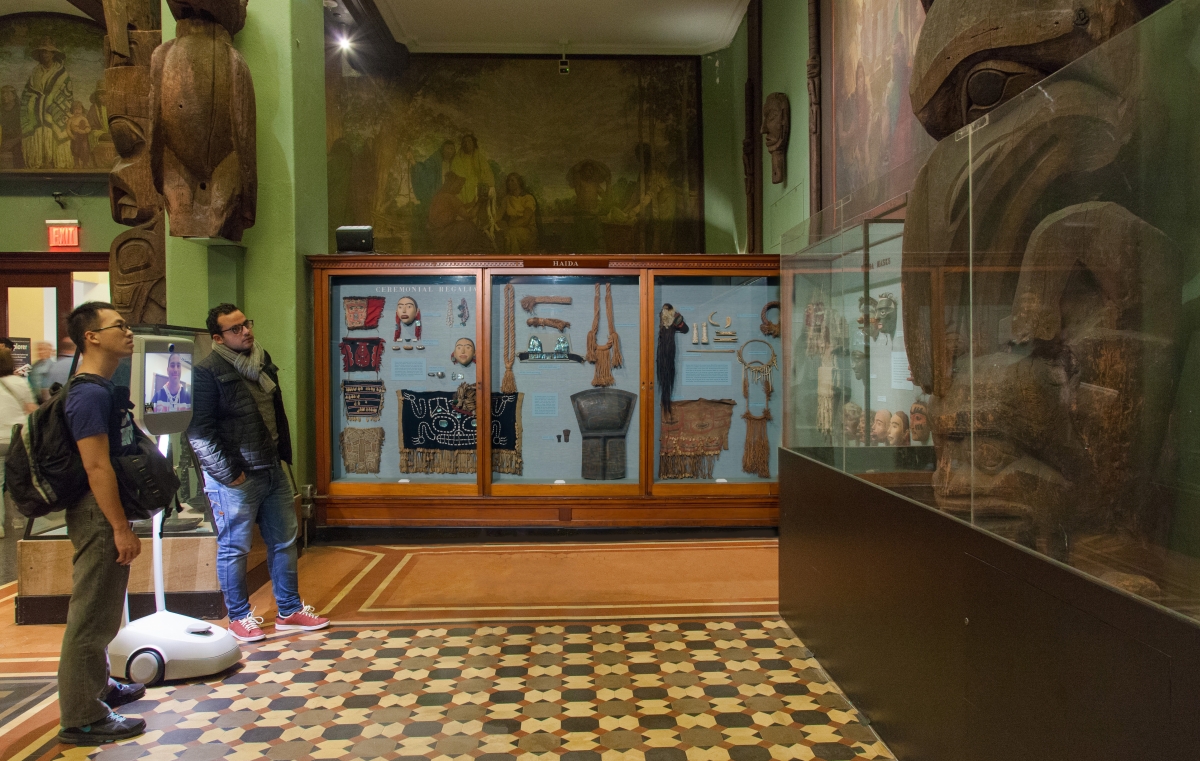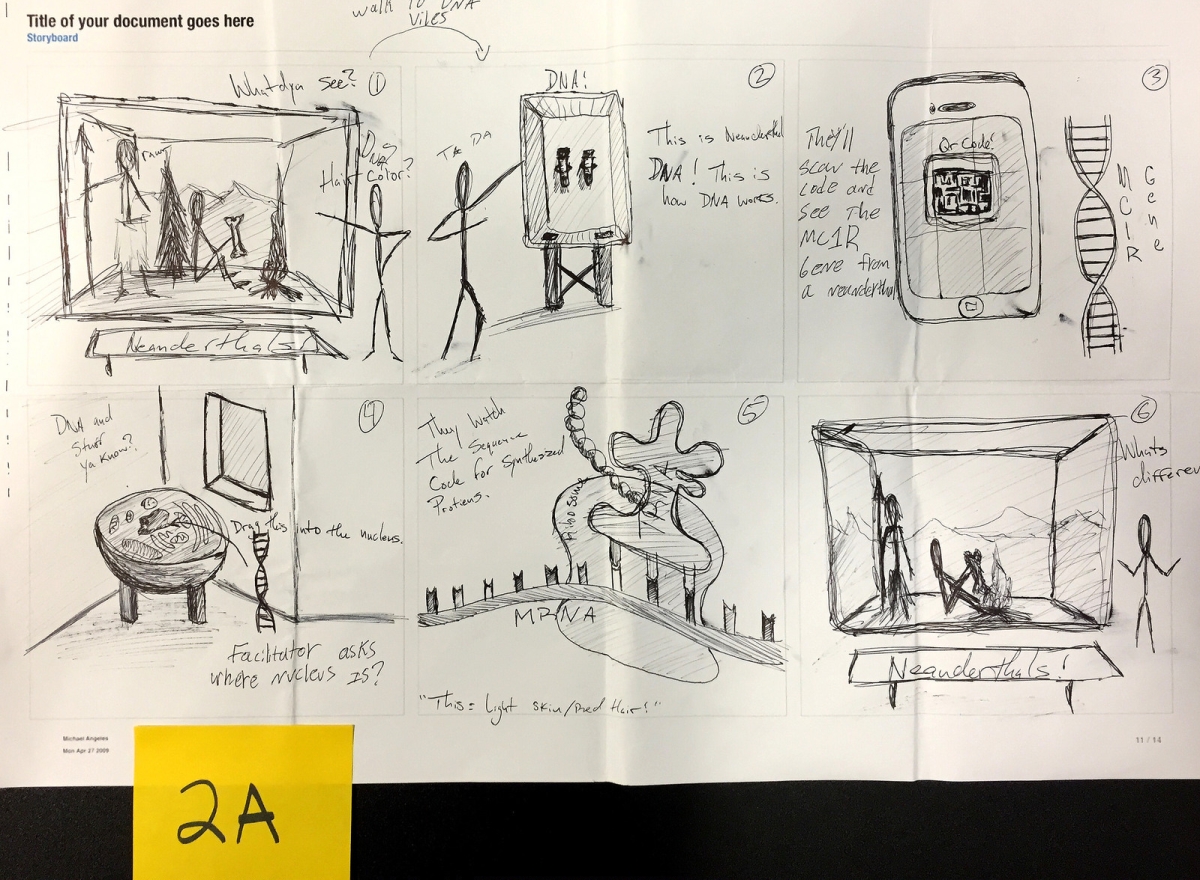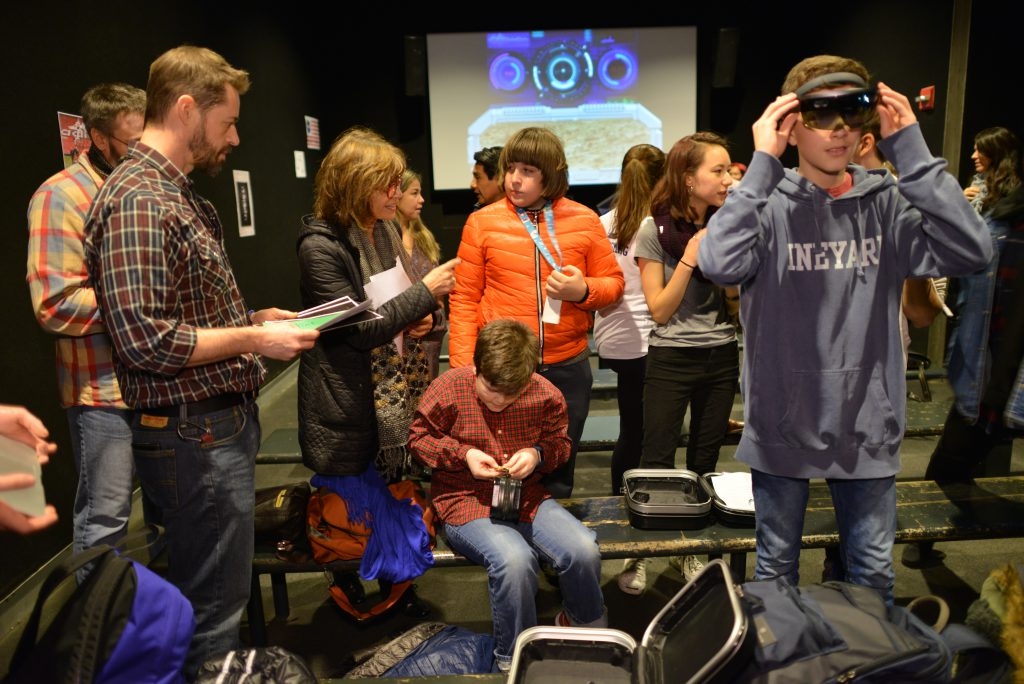Experience Design
In 2009, at a workshop co-lead by IDEO that launched the Hive Learning Network, I was first introduced to design thinking. It was love at first stakeholder map.
The training became a catalyst for my understanding the potential within the youth media programs I had been developing at the time. More importantly, it set me on a path to introduce into my youth programming iterative design practices, journey-mapping, prototyping, and other aspects of a user-centric design practice.
When I arrived at the American Museum of Natural History I was inspired every day to work with youth, outside consultants, and our talented staff to innovate visitor-facing experiences through design practices. Below are just a few examples:

VIDEO BRIDGE
The oldest Hall at the American Museum of Natural History is the Hall of Northwest Coast Indians. It often leaves visitors misinformed about the vibrant living communities of Canada’s First Nations whose treasures are represented through the spacious room. To transform the experience and counter-act common misconceptions, we used telepresence robots to invite visitors to meet members of the Haida Nation and join them on tours of items from their community. This program contributed to the Hall’s current restoration process and was commended in the Wall Street Journal.

CRIME SCENE NEANDERTHAL
Crime Scene Neanderthal was an exploration in how to focus visitors in a Hall rich with content on just one stream of information through a facilitator-guided role-playing adventure. Based in the Hall of Human Origins, and designed to both update the information in the Hall and respond to the most common questions asked by visitors in the space, this mixed-media experience employed hands-on science tools, reproductions of Neanderthal bones, a mobile AR app, and the exhibits themselves to challenge visitors to become Neanderthal Detectives and investigate a crime scene using scientific evidence across disciplines.

ESCAPE THE PLANET
Does gamifying a visitor’s interaction with a science data visualization change how they experience or feel about the science , and if so how? And what impact does it have on their interactions with the people around them? To answer these questions we created Escape the Planet. Inspired by the rise of both escape rooms and their educational applications, we created a 20 minute experience, in the Big Bang Theater (a small room off the lower level of the Hall of the Universe) and a narrative involving the crew of a ship that crashed on Mars. The two main puzzles each required collaboration between the player in Hololens headsets and teammates working with physical materials.

